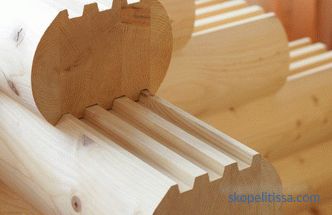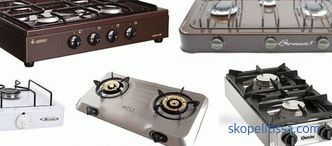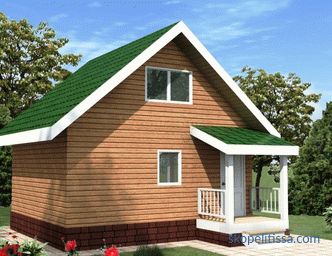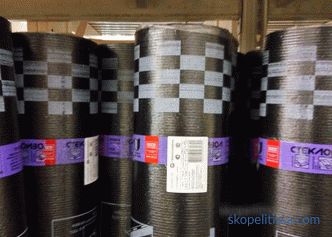Fences appeared not much later than at home - this is hinted at by the common root in the words "fence", "city" and "garden". For most people, they were a defense against the dangers of the outside world. A couple of centuries ago, a decorative fence could be found only in the garden of a titled person.
The times have changed - in the modern suburban area, the fence is not only a means of marking the boundaries of the territory, but also a way to improve the appearance of the garden, add the final touch to the thoughtful exterior. Decorative fences help to draw the attention of guests to the details of the garden composition. In a close community of amateur gardeners, original fences will certainly become the subject of discussion (and who knows, maybe the cause of easy envy).
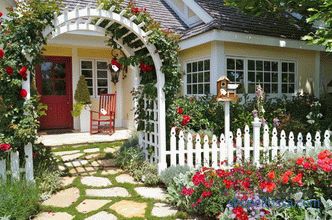
Classical garden tradition - figured shtaketnik and entrance in the form of an arch
Choice of decorative fencing
A decorative fence will not become a barrier for an intruder and will not protect owners from prying eyes. Such a fence performs other functions:
-
Zoning. Decorative fencing is an excellent separator between the functional areas inside the suburban area, at ease separating, for example, the living area from the recreation area.
-
Accent. The fence in front of the parade area (in front of the house facade), along with the overall design, serves as the business card of the owners, an indicator of their aesthetic taste. An elegant fence around the flower bed draws attention to the flower arrangement.
-
Dressing. Such designs give a finished look to flower beds and flower beds, without obscuring the sunlight.
-
Restriction. The fence sets the boundaries of plant growth, protecting the paths from the growth of grass, and the soil in high beds - from sprinkling.
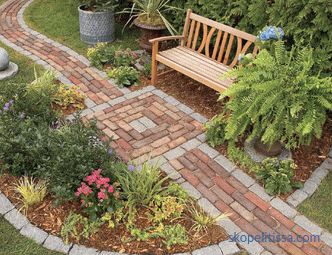
Clear selection of the rest area: a stone border around the flower beds and benches
For decorative fences to give harmoniously fit into the landscape, it is necessary to clearly understand their purpose (the purpose of the fence), which will help determine the material, size and design. Also take into account the peculiarities of flowers and grass growing alongside:
-
A fence can be symbolic if it separates a lawn, a path or the edge of a low terrace. You can step over and calmly continue your journey.
-
The fence, 40-50 cm high, protects flowers and herbs from energetic pets and nimble younger generation.
-
The fence should be strong if lemongrass, honeysuckle or climbing rose grows nearby. They are able to braid the fence and bring it down.
-
Fence may have additional functions. A border with a ledge on the edge allows the mower to gently handle the edge of the lawn.
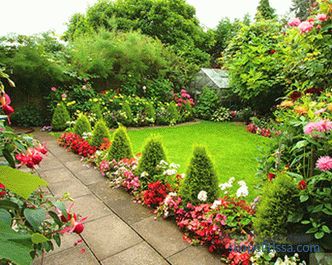
The natural setting of the garden path is a fence of fresh flowers
Decorative garden fences: choice of material
Decorative garden fencing can give the yard territory a feeling of lightness and sophistication. Both natural and artificial materials are used for the manufacture of fences:
Wood
Technical progress gave mankind a lot of new materials, but wood is still the most popular option, cheap, environmentally friendly and easy to fit into any landscape style. Although wood is a short-lived material, the demand for wooden fences does not weaken. Wooden decorative fences can be divided into several types:
-
Picket. It is easily recognizable by neat, evenly spaced vertical slats. The fence clearly marks the border and is therefore often used in the foreground area. The classic version is painted white and has a height of not more than 1 m, with timely care it can last for a long time.
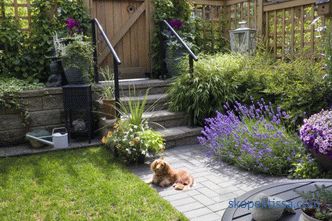
The wooden lattice does not deprive the plants of life-giving sunlight
-
Fence-trellis (trellis). Each section of such a fence looks like a skeleton on which the slats are fixed at a selected angle. The design does not provide confidentiality, but it is aesthetic and can be used as a base for climbers.
-
Picket fence. The ancient powerful fence of logs tipped at the top has decreased to the size of a decorative fence around flower beds, flower beds and paths. For the arrangement, pegs are used, with the height of which one can experiment (it is made linear, stepped, with different hemp angle, or left disordered). The texture of the tree emphasize stain or clear varnish. Sometimes a log is sawn into pieces of the required length, which are dug around the perimeter of the flower bed and form a chain of stumps.
The main disadvantage of wooden fences is their fragility.The most careful processing of protective compounds and varnishes will not save the tree from rotting in the place of contact with the ground.
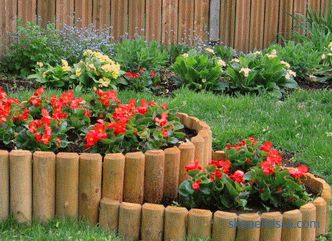
The curb of bars is suitable for beds with short flowers
On our site you can find building contacts companies that offer the service of building fences and fences. Directly to communicate with representatives, you can visit the exhibition of houses "Low-rise Country".
Plant materials
-
Wattle. The traditional fence of the southern regions won a solid place in the areas of admirers of ethno-style. The fence of twisted willow twigs (hazelnut, willow) is an excellent decorative technique for separating zones on the site or fencing a large flower bed. An additional decoration may be a pair of clay pots strung on protruding stakes. This manufacturing technique is used to make a flowerbed basket suitable for undersized flowers.
-
Bamboo. Bamboo is a strong and lightweight material with a beautiful smooth surface and is often used as an alternative to wood. A bamboo fence is found in oriental-style gardens. It can last for 15-20 years, if the surface is applied a wax coating. The disadvantages of the material is its cost and complexity of processing.
-
Forest material. A fence of thick boughs and logs gathered in the forest can have an authentic look and attract by the absence of symmetry. Many will like the fence in the style of the country of birch or pine poles.
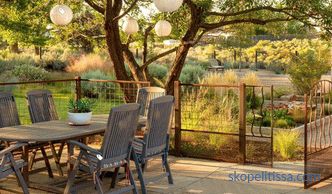
Metal fence as a fence for the recreation area
Metal
Welded and forged fences are a beautiful and expensive category in the series of decorative fences. They can be divided into:
-
Standard, assembled from pre-fabricated items at the factory.
-
Exclusive (copyrighted), made by the master by the individual order.
All metal fences are durable, have a respectable appearance and are combined with a variety of architectural styles. Most often, a metal fence looks like a decorative lattice, fixed between brick pillars - coniferous or climbing plants are often planted near it.
About how decorative fences are made on video:
Sometimes for a bed fence use of trimming profiled, remaining after the construction of the fence or replacing the roof. Suitable pieces are hammered into the ground along the perimeter of the flower bed. This border is long enough, as it is made of galvanized metal with a layer of anti-corrosion protection.
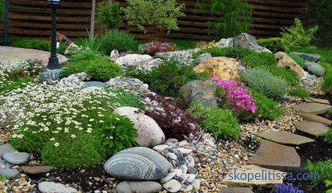
A flower bed fenced in with slate slabs
Natural and artificial stone
Of natural or artificial stone obtained strong fencing, giving the site a natural look. In landscape design use:
-
Natural stone. Pleasure is not cheap, only if you do not live at the foot of the mountains. Borders and decorative fences fasten concrete solution or laid dry. Granite, marble, basalt, slate, pebble and sandstone perfectly complement any design.
-
Mosaic border. A unique design can be obtained using not only river pebbles or paving stones, but also fragments of ceramic tiles (often in combination with glass). Diverse stones and bricks are also suitable for the ornament.
-
Brick. The most accessible material for edging tracks and flower beds; especially harmoniously looks next to the house, lined with the same material. Sometimes the curb or fence is covered with fluorescent paint, so that they glow in the dark, giving the garden a mystery and showing the boundaries of the tracks. For the strength of the decorative brick fence does not interfere with the foundation.
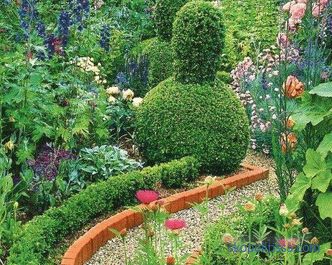
The path is separated from the beds by a brick border
It can be interesting! In the article on the following link read about wood paint.
-
Gabion. In modern landscape design, a metal grid filled with stones is so called (the main purpose of gabions is to strengthen landslide slopes, cones of bridges, river banks). The mesh is welded from galvanized steel and filled with decorative stone - large pebbles, basalt, granite or quartzite. The size of the individual stones should not be less than the size of the cells.
-
Concrete. Oddly enough it sounds, concrete decorative fences for the garden are becoming more and more popular. New technologies allow to produce decorative concrete sections and blocks of different shades - from light (which can be painted after installation), to natural and bright. The outer side of such elements can be smooth, or repeat the texture of natural stone, brick, slate or tile.Such a decorative fence is as spectacular and durable as a stone fence, and it costs much less.
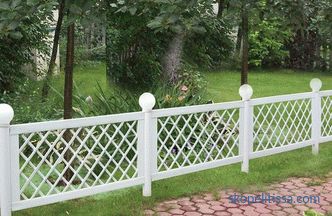
Decorative plastic fence
Plastic
Manufacturers offer a large range of plastic decorative fences of various colors and sizes. Plastic fencing in the form are tape or sectional; they can be used for:
-
allocation of areas of the site (garden, vegetable garden, barbecue area);
-
flower beds, front gardens and flower beds;
-
design of the garden path;
-
fencing of the children's (sports) playground.
About the gabion in landscape design on video:
Plastic fences have many advantages:
-
Low weight, durability, simple installation.
-
Durability. Service life is 20 years.
-
Diversity. There are shtaketniki, nets, wicker and combined options (deaf below and trellised above).
-
Easy to use. The plastic fence is resistant to temperature changes, does not need periodic painting (like wooden), is easy to maintain (if necessary, you can wash off the dirt with water).

Plastic mesh prevents lilies from growing
Care should be taken to too cheap plastic products. It is likely that a decorative fence for a garden made of poor quality material will quickly burn out, break down and release volatile chemical compounds hazardous to humans.
Hand-made materials
For some, rubbish, and for someone - a source of inspiration, allowing you to create a work of art. Gardens are decorated with decorative fences of:
-
Plastic or glass bottles. Most often, bottles are buried neck down, forming an original fence along the edge of the flower bed.
-
Automobile tires. They (according to the idea) can be cut or painted; From several tires of different diameters, you can build an original multi-tiered flower bed.
-
Household Items. There are flowerbeds and borders decorated with ceramic plates, vinyl music discs and even car wheel discs.
-
Slate. The material remaining after the roof overlaps is suitable for building a durable (albeit low-key) decorative fence. Slate instilled around the perimeter, reinforcing the inside of the tree or pieces of reinforcement.
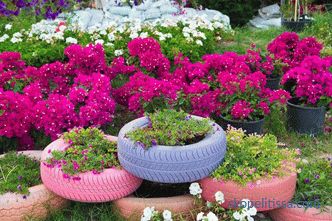
Thanks to the right choice of color for tires and plants, the composition looks stylish
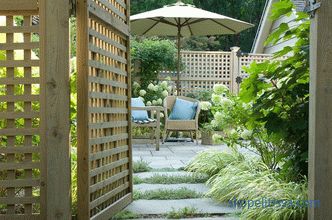
Recreation area, fenced with a grating fence
It might be interesting! In the article the following link read about calculation of a fence from a professional flooring.
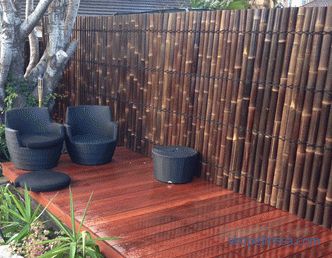
Elegant decorative bamboo fence
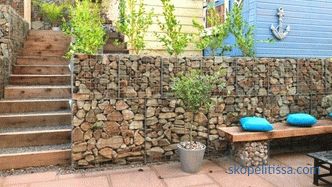
Gabion will be able to attract the attention of your guests
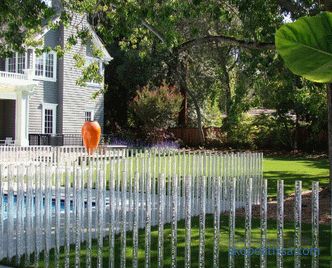
A fence of acrylic rods separating the pool from the garden
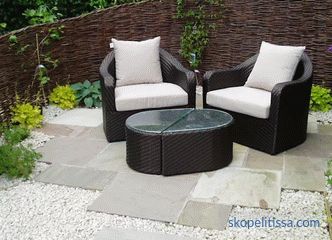
Cozy wicker fence around the recreation area
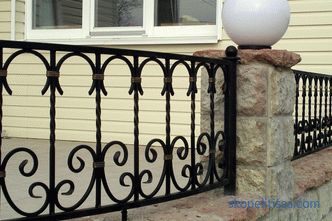
Combined fence with lighting
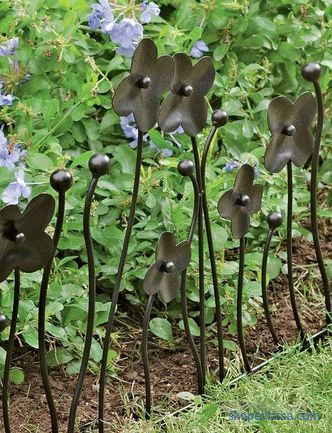
The original fence of metal
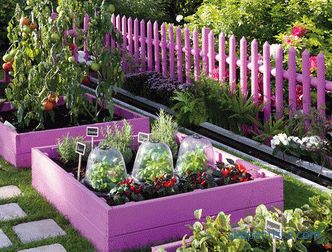
Stylish design in a single scale
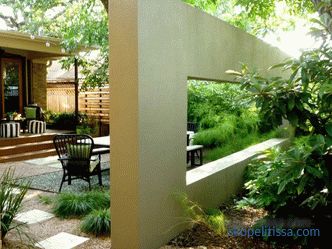
Concrete construction does not look like an extra detail
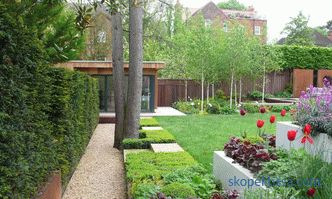
Multi-tiered bed with concrete fencing
It can be interesting! In the article on the following link read about polycarbonate fence.
Conclusion
In modern suburban areas, fences have long ceased to be simply a fence from the outside world. Thanks to the imagination of the owners and designers, they turned into decorative detail that plays a significant role in the design of the territory. From the variety of forms and materials it is easy to choose those that best fit into the overall composition of the site.
